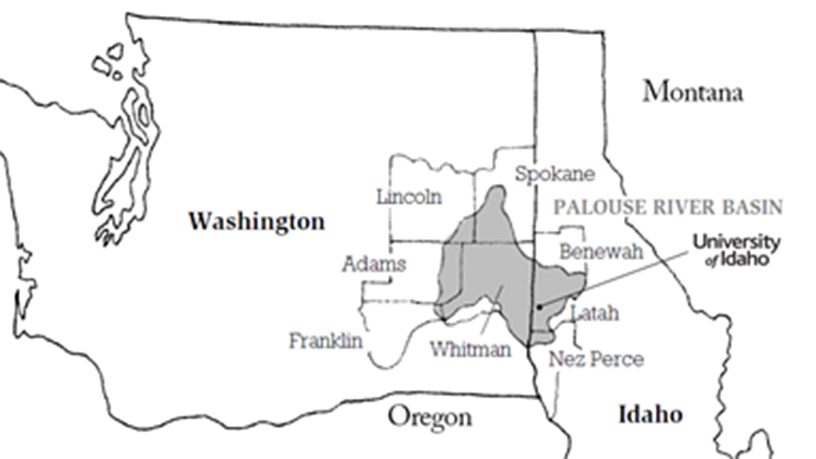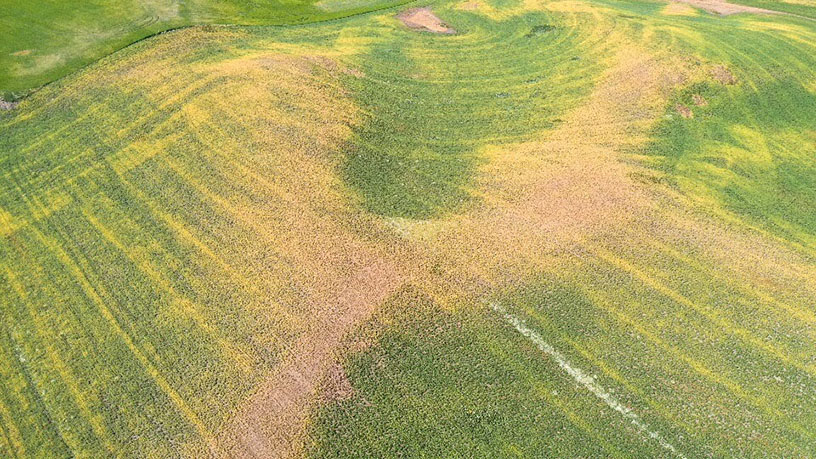Research
Precision Agriculture
Precision agriculture (PA) is a site specific crop management (SSCM) concept based on observing, measuring and responding to inter and intra-field variability in crops.
Precision agriculture is particularly beneficial when significant variation exists within a field. The higher the field variability, the higher the potential savings. The Palouse area of the Pacific Northwest, which spans from southeastern Washington to west-central Idaho (Figure 1), consists of over 2 million acres of rolling hill agricultural land. Because of its immense variation, the winter wheat yield in a typical Palouse field varies from as low as 5 bushels/acre to as high as 110 bushels/acre, making the Palouse a prime candidate for applications of precision agriculture. The rolling hills of Palouse surround the University of Idaho, and hence the institution is at the best location for the precision agriculture research.

Figure: Palouse hills surrounds the University of Idaho.Non-irrigated Palouse has the higest productivity of wheat in the world.
My research focus on two areas of precision agriculture for the palouse. The use of biochar to improve the moisture distribution, and the real time detection of weeds from a drone for spot spray application.

A drone image showing the moisture distribution in Palouse hills. The top of the hills lack moisture and can be seen as dry patches. The greenness at the middle indicates higher moisture. The bottom of the hill indicates waterlogged condition and has no crop establishment. Use of biochar on hilltop can help redistribute the moisture.


